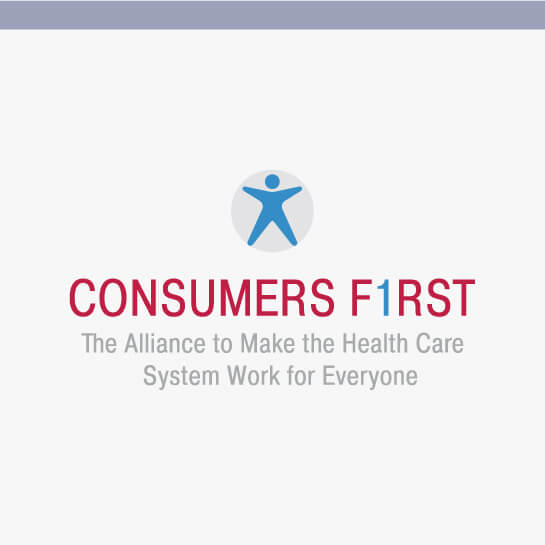
Hospital Consolidation – How Hospitals’ Machinations Affect Real People
By Adina Marx,
04.05.2022
Stories about hospital mergers are filling newspaper front pages across the country. But what does this consolidation of power mean for people who show up at the ER in the scariest moment of their life or just want to make sure they can see their family doctor? It’s not always the happy tale CEOs claim will be the result when they’re selling the story to the public.


Tamara Hamilton, of Colorado, can attest to what these hospitals do once they’ve boxed consumers into a corner. At the beginning of the pandemic, Tamara’s toddler grandson Tucker became very sick with an intense cough and other COVID-19 symptoms. With his oxygen levels dropping, Tucker’s pediatrician advised Tamara and her daughter, Lillian, to take Tucker to the emergency room and request oxygen and steroids. Once they got there, however, the hospital refused to give Tucker the recommended treatments or call his pediatrician. They even accused Lillian of trying to get illicit drugs while she begged them for oxygen for her toddler. Tamara and Lillian felt trapped and like they were running out of options and time. They were prepared to drive Tucker to a Denver hospital seven hours away, but that was an incredibly dangerous proposition. Eventually, they successfully prevailed upon the hospital to give Tucker the life-saving treatment he deserved. In one of the most desperate moments of their lives, Tamara and Lillian had to fight two battles on behalf of little Tucker.
Kyunghee Lee felt similarly trapped when she found out that her payment for her yearly rheumatologist treatment had jumped from $30 to $354.68. Kaiser Health News first reported Kyunghee’s story last year, writing that about once a year the arthritis in her middle and ring fingers become so painful that they hurt even to touch. When that happens, she makes an appointment with her rheumatologist and gets a steroid injection, which relieves the pain – a doctor’s visit that usually costs around $30. When she went to get her injection over the summer, Kyunghee noticed that her doctor’s office had moved one floor up in the building, but everything else appeared to be the same — until the bill came. Before insurance kicked in, the total bill was $1,394 of which Kyunghee had to pay $354.68. Her condition was the same. Her treatment was the same. Even the front door she walked through was the same. The only thing about her visit to the doctor’s office that had changed was the floor number she punched in the elevator up. As she would later find out, the small location change made a huge difference in how much that doctor’s visit would cost her.
Tamara and Kyunghee’s experiences might not have happened if it weren’t for hospital consolidation. Put simply, hospital consolidation is the merging of hospitals with each other into large networks, or when they buy out smaller independent practices, like Kyunghee’s doctor’s practice. Once these hospital networks get so huge they don’t have any competitors, they start raising prices indiscriminately. They can also choose to contract with only one insurance company, so even if you live near the hospital, it could still be out of your insurance network. They get away with this because they’re the only show in town. Even with prices soaring out of reach, where else are people supposed to go for their health care?
Making things worse, consumers don’t always know this is happening until it’s too late. Unbeknownst to Kyunghee and her family, the hospital system changed how the appointment was classified. Despite only being a floor up from where her appointments used to be, the medical office building was now being classified as a hospital, and the room as an infusion clinic, which meant the hospital system was able to charge her a $1,262 facility fee listed as “operating room services.” This is one of the results of consolidation. A hospital bought the doctor’s office, changed the classification and then added this fee, despite nothing changing about Kyunghee’s treatment, doctor, or even the building she visited.
It might be tempting to look at huge hospital bills and say, “well, the insurer covered most of it, so what’s the big deal?” But the gears of our health care systems are interconnected, and the incentives are designed to prioritize profits over people. Insurance companies pay for the care we receive, but that money comes from the premiums you pay the insurance company, whether it’s directly through a premium or indirectly from your employer. If prices from hospitals go up, insurance companies will offset that cost by charging people higher premiums. No matter what, if care gets more expensive, people, not companies, are the ones left with the bill.
So are we destined to suffer financial ruin from the next generation of monopolists? Absolutely not. Families USA is one of the few organizations focusing on this issue and others that lie at the heart of bringing greater value to our health care system and reversing those incentives. The Consumers First coalition, for example, brings together sometimes strange bedfellows from unions to insurance companies to groups representing businesses and employers, led by Families USA’s focus on consumers. There’s already been progress on stopping hospital industry abuses. The No Surprises Act, which puts an end to exploitative and unexpected medical bills people got when they unknowingly received care from an out-of-network provider, went into effect at the beginning of this year. The Biden administration has taken steps urged by Consumers First to crack down on hospitals that refuse to comply with new transparency reporting requirements. And Congress could act on legislation to limit anti-competitive practices and improve transparency, with the end goal of better overall health care and lower costs.
Whatever policy solutions finally come to pass the bottom line is that people in America shouldn’t have their health suffer so that corporations can continue to amass power and wealth.



